When installing Windows 7 Service Pack 1 you not
only install the updates but you also end up with
numerous Backup files. These backup files, in most
cases, simply sit on your hard drive taking up
valuable disk space. Windows 7 service Pack 1, for
example, leaves behind around 650MB of backup files
after the service pack has been installed.
Many users simply think no more about these
backup files, preferring to leave them where they
are regardless of how much disk space they take up.
Other users, however, prefer to get rid of the
backup files, especially if they happen to be low on
disk space.
Whether you actually remove the backup files or
not is entirely up to you. One disadvantage of
removing the backup files is that, by doing so, you
make it impossible to actually uninstall the service
pack should you find it necessary to do so.
To actually remove the backup files is simple
enough. Two methods are available; using a command
prompt or using Windows built in Disk Cleanup
application. The Windows Disk Cleaner option is by
far the simpler and so we will outline how to remove
the backup files using the Disk Cleanup option.
- Click the Start button and in the Start Menu
Search Box type: Disk Clean.
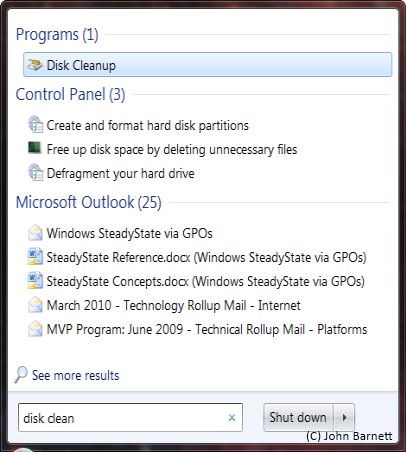
Fig: 54-1 Search list showing
Disk Cleaner application
- The Disk Cleanup application will appear as
a highlighted option at the top of the Search
list. Press the Enter key to start the
application.
- Before you can start removing files you need
to select the relevant hard drive. By default
the C: drive is selected.
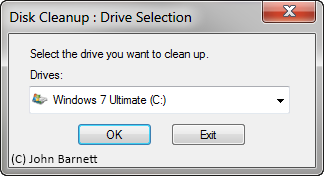
Fig: 54-2 Select the drive
you wish to clean
- Disk Cleanup will now calculate how much
space it can free up.
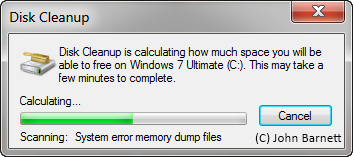
Fig: 54-3 Calculating how
much space can be freed may take a few minutes,
so be patient
- A list of available files that can be
deleted will now appear.
- While this list is important, at this stage
we are not particularly bothered about the files
on this list. We are more interested in the
available System Files.
- To see what System Files can be deleted,
click the Clean Up System files button.
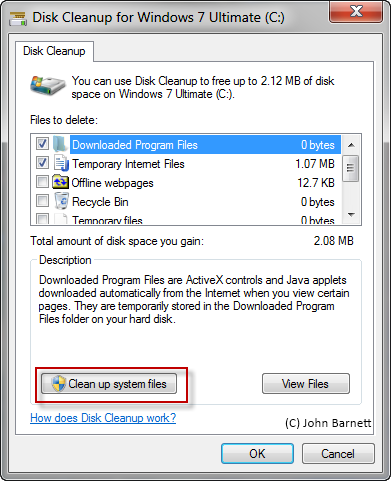
Fig: 54-4 Click on the Clean
up system files button to display system files
that can be deleted.
- You will need to select the drive you want
to clean once again and click the OK button.
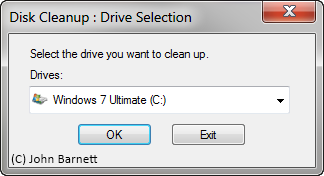
Fig: 54-5 Select the drive
and press the OK button to continue
- Once again Disk Cleanup will calculate how
much space it can free up.
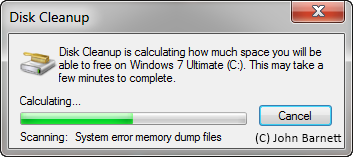
Fig: 54-6 Disk Cleanup will
need to calculate the available disk space it
can free up once again
- A list of available files will, once again,
appear. This time you need to look down the list
until you come to the Service Pack Backup Files
option.
- Once you have located the Service Pack
Backup Files option, place a check mark (Tick)
in the box to the left of the option and the
press the OK button.
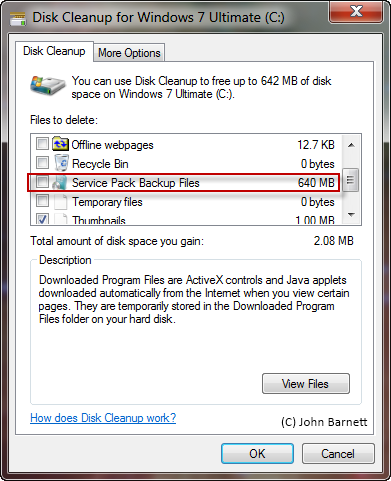
Fig: 54-7 Place a check mark
next to the Service Pack Backup Files option to
enable it
- A message will now appear asking you if you
are sure you want to permanently delete these
files. If you do then click the Delete files
button.
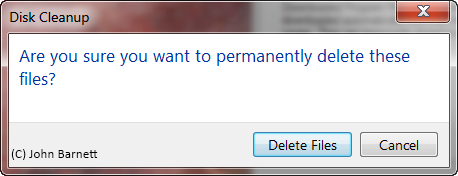
Fig: 54-8 Click the Delete
Files button to start the deletion
- A progress window will now appear. Once the
files have been deleted this window will
disappear and all the files you selected will
have been permanently deleted.
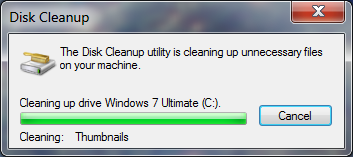
Fig: 54-9 The progress window
shows which files are currently being deleted
- Your Service Pack Backup Files have now been
deleted.